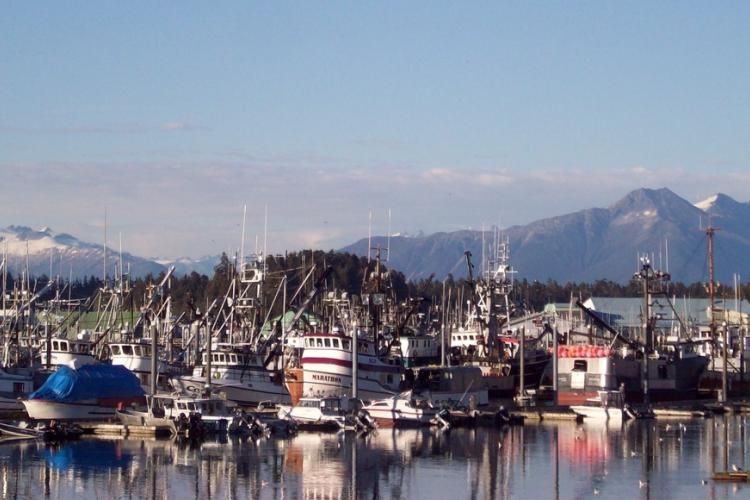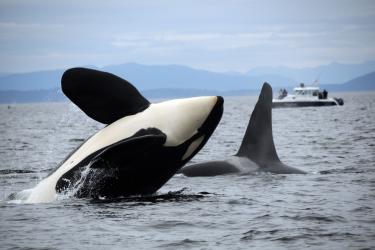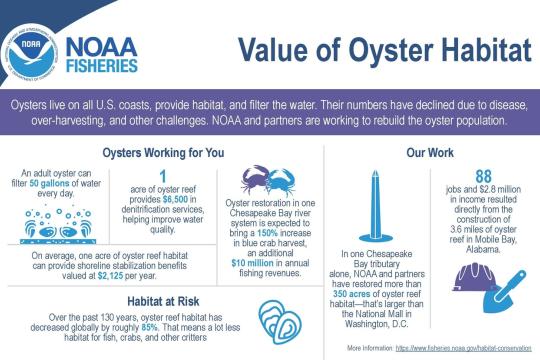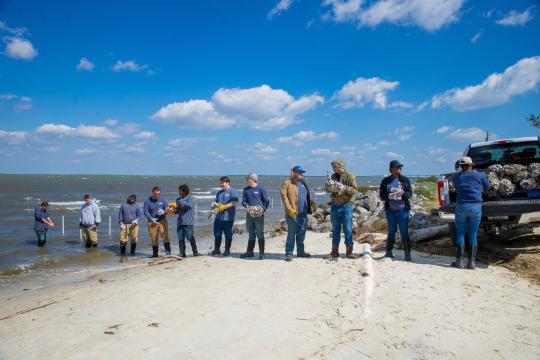NOAA Fisheries Community Social Vulnerability Indicators Toolbox is currently comprised of a suite of 14 statistically robust social, economic, and climate change indicators that uniquely characterize and evaluate a community’s vulnerability and resilience to disturbances (regulations, extreme weather, oil spills, sea level rise, etc.). The indicator map and graphing tool enables users to analyze both environmental justice as well as the climate vulnerability of over 4,600 coastal communities in 24 states. The social indicators are also routinely used for National Environmental Policy Act (NEPA), Magnuson-Stevens Act (MSA) and Executive Order 12898 (environmental justice) analyses.
Fishing Engagement & Reliance Indicators
It is broadly recognized that social vulnerability and resilience influence a community’s ability to respond and adapt to change. Fishing communities can face considerable uncertainty from unanticipated fluctuations in harvest, which directly affect fishermen’s household income. Changes in regulations may also affect fishing households and communities. Fishing communities, like all coastal communities, increasingly face acute threats from severe storms, flooding, and slow changes in sea level, temperature and acidification. Over time, all of these factors may affect the social vulnerability and resilience of a community.
The fishing engagement and reliance indices portray the importance or level of dependence of commercial or recreational fishing to coastal communities and are used in NEPA and MSA assessments and to address environmental justice as required by Executive Order 12898.
- Commercial fishing engagement measures the presence of commercial fishing through fishing activity as shown through permits, fish dealers, and vessel landings. A high rank indicates more engagement.
- Commercial fishing reliance measures the presence of commercial fishing in relation to the population size of a community through fishing activity. A high rank indicates more reliance.
- Recreational fishing engagement measures the presence of recreational fishing through fishing activity estimates. A high rank indicates more engagement.
- Recreational fishing reliance measures the presence of recreational fishing in relation to the population size of a community. A high rank indicates increased reliance.
Note: Recreational fishing indicators are calculated based on regionally available data so are not comparable on a national basis. Detailed discussion of how these indicators differ
Environmental Justice Indicators
Executive Order 12898, signed in 1994, directed federal agencies to identify and address the disproportionately high and adverse human health or environmental effects of their actions on minority and low-income populations, to the greatest extent practicable and permitted by law. It also directed agencies to develop a strategy for implementing environmental justice and as well as provide minority and low-income communities access to public information and public participation.
In January 2021, Executive Order 14008 built upon the earlier mandate by directing federal agencies to make achieving environmental justice part of their mission by developing programs, policies, and activities to address the disproportionately high and adverse human health, environmental, climate-related and other cumulative impacts on disadvantaged communities, as well as the accompanying economic challenges of such impacts.
Three of the indicators in the NOAA Fisheries Community Social Vulnerability Toolbox can be used for mandated Environmental Justice analyses.
- Poverty is expressed as those receiving assistance, families below the poverty line, and individuals older than 65 and younger than 18 in poverty. A high rank indicates a high rate of poverty and a more vulnerable population.
- Population composition corresponds to the demographic makeup of a community including race, marital status, age, and ability to speak English. A high rank indicates a more vulnerable population.
- Personal disruption captures unemployment status, educational attainment, poverty, and marital status. A high rank indicates less personal capacity to adapt to changes and thus a more vulnerable population.
Environmental Justice & Fishing Communities
NOAA Fisheries focuses on environmental justice in fisheries management because we know it matters. The figure below clearly illustrates this point. Communities dependent upon commercial fishing are far more likely to be poor, have a larger percentage of minority and tribal populations, and/or have residents with less “personal capacity” to respond to change, e.g., higher unemployment rates or lower educational attainment.

Climate Change Indicators
The MSA requires assessment of ecosystems, whose conditions are increasingly driven by climate change and its impacts on the marine environment. These impacts in turn affect the relationship between fishing communities and the marine- and land-based resources on which they depend.
Two climate change indices characterize environmental conditions that may affect the sustainability of essential commercial and recreational fishing businesses and infrastructure.
- Sea level rise risk signifies the overall risk of inundation from projected sea level rise between one to six feet over the next ~90 years. The indicator represents the possibility of inundation based upon the combined projections at each stage of sea level rise and could vary depending upon future circumstances. A high rank indicates a community more vulnerable to sea level rise.
- Storm surge risk refers to the overall risk of flooding from hurricane storm surge categories 1-5. The indicator represents the "worst-case" possibility of inundation based on the combined hurricane storm surge categories and could vary depending on future circumstances. A high rank indicates a community more vulnerable to a particular hurricane storm surge.
Additional Indicators
Economic Indicators
Economic indicators characterize the strength and stability of the workforce and the housing. These factors affect the cost of living which can become unsustainable for disadvantaged populations.
- Labor force structure characterizes the availability of employment including females employed, population in the labor force, self-employment, and social security recipients. A high rank indicates fewer employment opportunities and a more vulnerable population.
- Housing characteristics is a measure of infrastructure vulnerability to coastal hazards including median rent and mortgage, number of rooms, and presence of mobile homes. A high rank means more vulnerable infrastructure and a more vulnerable population. On the other hand, the opposite interpretation might be that more affordable housing could be less vulnerability for some populations.
Gentrification Pressure Indicators
The gentrification pressure indicators measure factors that, over time, may indicate a threat to the viability of a commercial or recreational working waterfront, including infrastructure.
- Housing Disruption represents factors that indicate a fluctuating housing market where some displacement may occur due to rising home values and rents including change in mortgage value. A high rank means more vulnerability for those in need of affordable housing and a population more vulnerable to gentrification.
- Retiree migration characterizes communities with a higher concentration of retirees and elderly people in the population including households with inhabitants over 65 years, population receiving social security or retirement income, and level of participation in the work force. A high rank indicates a population more vulnerable to gentrification as retirees seek out the amenities of coastal living.
- Urban sprawl describes areas experiencing gentrification through increasing population density, proximity to urban centers, home values and the cost of living. A high rank indicates a population more vulnerable to gentrification.







